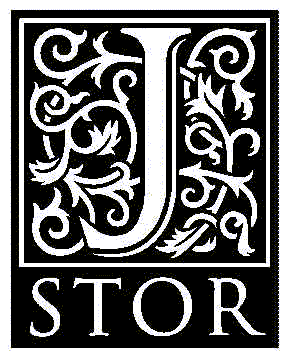
The
Waldenstein Woolen Mill,
Noble Entrepreneurship in
Eighteenth-Century Bohemia.
By HERMANN FREUDENBERGER. ("Kress
Library Publication," No. 18.)
Boston: Harvard Graduate School of Business Administration, 1963. Pp. xiv+69.
$4.00.
(reviewed by Clifford Geertz)
The eighteenth-century woolen mill Professor Freudenberger here describes was peculiar in a number of ways. It was located in the Hapsburg Empire, hardly the leading edge of economic progress of the time. It was a true factory, organized along technologically quite rational lines, not a mere assemblage of independent craftsmen. It was founded (in 1715) not by some rising bourgeois filled with the grim compulsions of the Protestant ethic, but a devoutly Catholic, evidently somewhat paternalistic member of the upper nobility, and successfully managed by him and his direct heirs for about a century. It was located not in a city, nor even a proper town, but on a feudal manor, with reconverted serfs for laborers, renegade Bohemian guild masters for foremen, and imported Dutch artisans as work-instructors. And not only is there good, and recently discovered, archival material on labor force, costs and prices, and sales volume, but all the major phases of its work process were pictorially recorded in a series of remarkably detailed copper engravings (twenty of which are reproduced in the book) made by locally established artists whose usual interests were directed toward more ordinary forms of landscape. Small wonder that Freudenberger, who handles this diversity of material with practised authority, regards his small study of the mill's history and operation as umque.
The nucleus of this unusual institution was the even more unusual Bohemian Count who conceived of it, planned it, and, not without difficulty, brought it into being: Johann Joseph von Waldenstein (b. 1684). Younger son of a Hapsburg courtier, grandnephew of the Archbishop of Prague, leading member of Bohemia's governing council, president of the country's commercial college, and holder of large estates llCattered throughout the entire region, \Valdenstein brought many things to the mill. First, he brought money. Except for the forceless government, which later on made some small loans to the enterprise, only a very wealthy nobleman could have advanced the 30,000 florins or so necessary to get the mill under way. Second, he brought drive. A "sober and serious gentleman, fully willing to accept his responsibilities as father to his subjects and as servant to his master, the king-emperor," he saw the mill as a way of at once reducing the suffering of his dependents, serving the interests of the languishing empire, realizing the tenets of his faith, and increasing his family's fortune. Third, he brought a protecting environment, a "place of refuge" for modern economic organization. For only on a manor (or a monastery) could the intense hostility of the urban-based weaving guilds toward technological innovations, and especially imported ones, be prevented from h:tlting any movement toward factory production. (Even then, the good Count had now and then to protest to the government that his salesmen were being harassed by guildsmen at the provincial fairs.) And finally, he brought a cosmopolitan viewpoint. A citizen of Europe as well as of Bohemia, he could appreciate the advantages of foreign techniques--especially Flemish ones--and rise above provincial prejudices of language and religion to bring practitioners of them into his factory as teachers. The Count, decorating his factory walls with religious pictures and wandering around Europe looking at machinery, is a fascinating figure, and it is a misfortune--presumably an unavoidable one--that what Freudenberger has been able to find out about his life and personality is not more extensive.
Freudenberger completes his monograph with a detailed study, based on the plates, of the technical organization of the mill, and with a survey, based on the archives, of its business history. His picture of the factory's operation is vivid and detailed, of its commercial aspects careful and incisive, and the writing is excellent throughout. From the whole emerges a valuable contribution both to European economic history and to the study of economic development, a fact which makes paying $4.00 for some sixty pages of text a rather more rational act than it might seem at first glance.
CLIFFORD
GEERTZ
University of Chicago
Book Review, in: The Journal of Political Economy, Vol. 72, No. 5 (Oct., 1964), pp. 527-528.
online source: http://www.jstor.org
JSTOR's Terms and Conditions of Use provides, in part, that unless you have obtained prior permission, you may not download an entire issue of a journal or multiple copies of articles, and you may use content in the JSTOR archive only for your personal, non-commercial use.
The Journal of Political Economy is currently published by The University of Chicago Press. Please contact the publisher regarding any further use of this work. Publisher contact information may be obtained at http://www.jstor.org/journals/ucpress.html.
Each copy of any part of a JSTOR transmission must contain the same copyright notice that appears on the screen or printed page of such transmission.

Using this text is also subject to the general HyperGeertz-Copyright-regulations based on Austrian copyright-law (2001), which - in short - allow a personal, nonprofit & educational (all must apply) use of material stored in data bases, including a restricted redistribution of such material, if this is also for nonprofit purposes and restricted to the scientific community (both must apply), and if full and accurate attribution to the author, original source and date of publication, web location(s) or originating list(s) is given ("fair-use-restriction"). Any other use transgressing this restriction is subject to a direct agreement between a subsequent user and the holder of the original copyright(s) as indicated by the source(s). HyperGeertz@WorldCatalogue cannot be held responsible for any neglection of these regulations and will impose such a responsibility on any unlawful user.
Each copy of any part of a transmission of a HyperGeertz-Text must therefore contain this same copyright notice as it appears on the screen or printed page of such transmission, including any specific copyright notice as indicated above by the original copyright holder and/ or the previous online source(s).